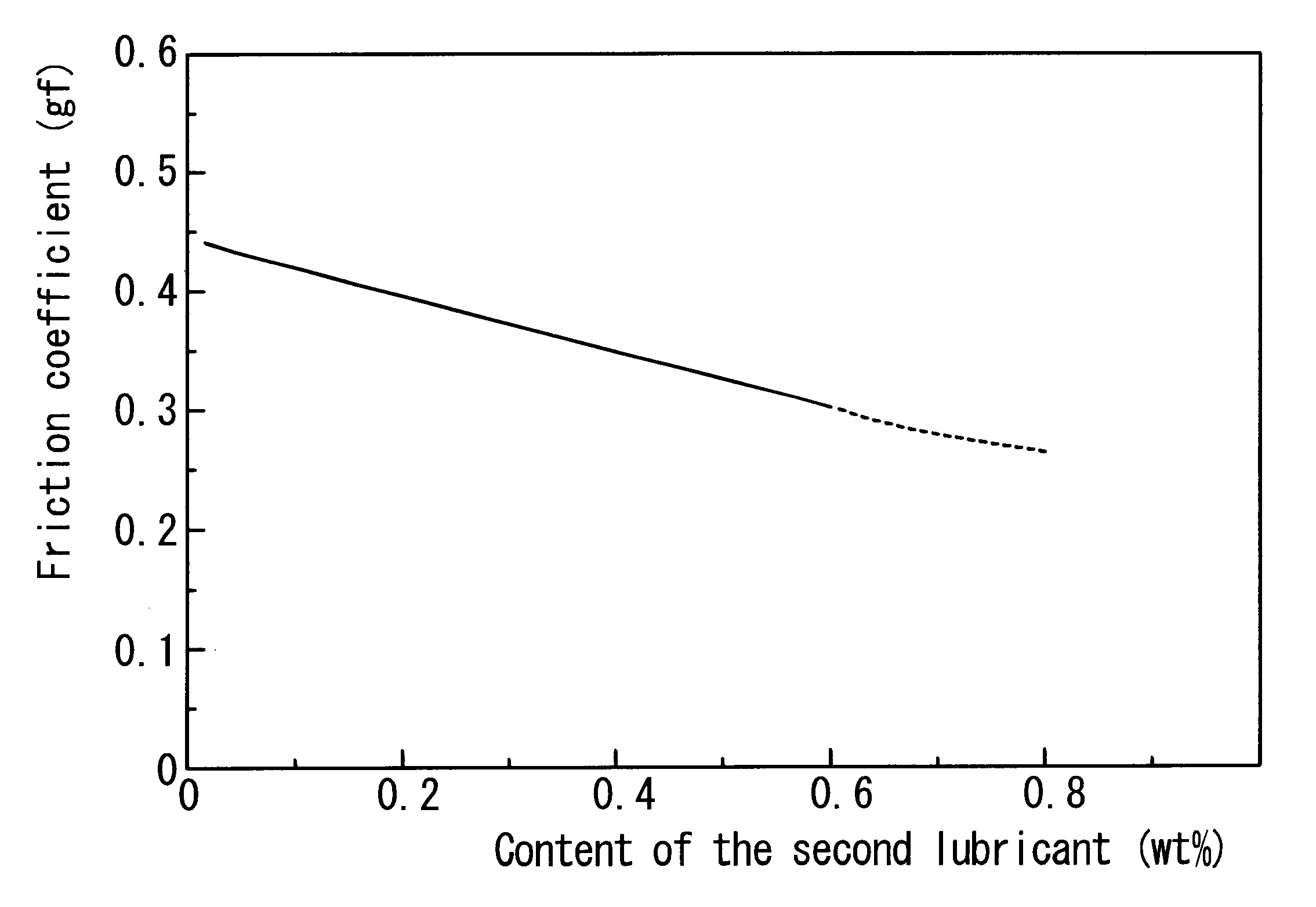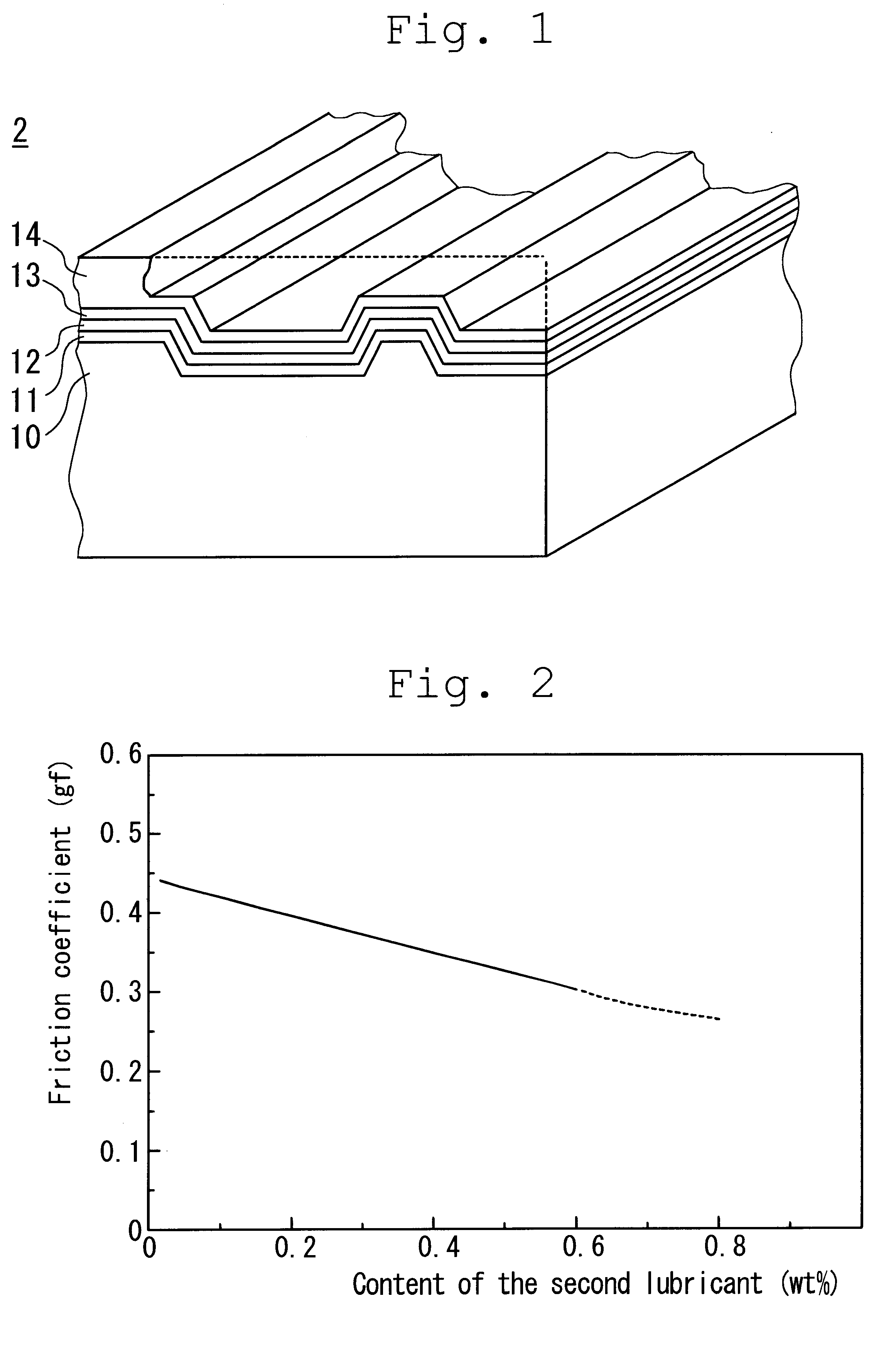Compositions for protective films and optical recording media
a technology applied in the field of compositions of protective films and optical recording media, can solve the problems of insufficient lubricity of protective films of such recording media, wear or damage of magnetic head or protective film, and decrease of lubricity with sliding cycl
- Summary
- Abstract
- Description
- Claims
- Application Information
AI Technical Summary
Benefits of technology
Problems solved by technology
Method used
Image
Examples
example 1
(1) Preparation of a Dispersion
Using a bifunctional monomer (NPGDA, available from Nippon Kayaku Co., Ltd.) as a binder material (A) for forming protective films, an ethylene oxide-modified silicone oil compatible with the binder material (A) (TSF 4441, available from Toshiba Silicone Co., Ltd.) as a first lubricant and a dimethyl siloxane incompatible with said binder material (A) but compatible with the first lubricant (KF96, available from Shin-Etsu Chemical Co., Ltd.) as a second lubricant, an emulsion of 10 parts by weight of the first lubricant and 30 parts by weight of the second lubricant in 50 parts by weight of the binder (A) was disperesed for a few minutes using a homogenizer to give an intended dispersion.
(2) Preparation of a Composition For Protective Films
A polyfunctional oligomer compatible with the first lubricant but incompatible with the second lubricant (Aronix M6250, available from Toagosei Co., Ltd.) was used as a binder material (B) of a different type from th...
examples 2-4
Protective films were formed and evaluated under the same conditions as in Example 1 except that the contents of the first and second lubricants were changed. The contents of the first and second lubricants and evaluation results are shown in the above Table 1.
The protective films of Examples 2, 3 and 4 showed good lubricity and slidability as demonstrated by the low friction coefficients of 0.42 to 0.30 in spite of the low lubricant contents of 1.5, 1.7 and 2.2% by weight, respectively.
Removal of dust and dirt was also good.
example 5
The binder material for protective films prepared in Example 4 was added into the dispersion prepared in Example 4 to prepare an intended composition for protective films. A protective film was formed and evaluated by the same procedure as in Example 4. The contents of the first and second lubricants and evaluation results are shown in the above Table 1.
In Example 5, the composition for protective films was prepared in the reverse order to that of Example 4, but the results were not especially different and an optical recording medium with excellent lubricity and slidability was obtained.
The relationship between the friction coefficient and the content of the second lubricant in Examples 1-5 is shown in the graph of FIG. 2. The friction coefficient decreases with the increase of the content.
Comparative examples are described below.
PUM
| Property | Measurement | Unit |
|---|---|---|
| Percent by mass | aaaaa | aaaaa |
| Percent by mass | aaaaa | aaaaa |
| Fraction | aaaaa | aaaaa |
Abstract
Description
Claims
Application Information
 Login to View More
Login to View More - R&D
- Intellectual Property
- Life Sciences
- Materials
- Tech Scout
- Unparalleled Data Quality
- Higher Quality Content
- 60% Fewer Hallucinations
Browse by: Latest US Patents, China's latest patents, Technical Efficacy Thesaurus, Application Domain, Technology Topic, Popular Technical Reports.
© 2025 PatSnap. All rights reserved.Legal|Privacy policy|Modern Slavery Act Transparency Statement|Sitemap|About US| Contact US: help@patsnap.com


